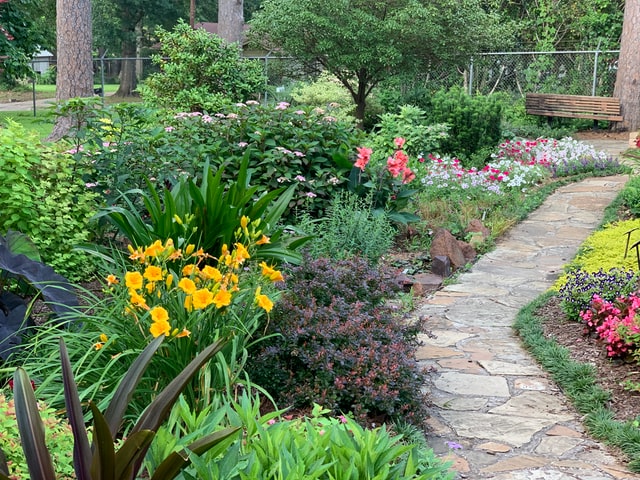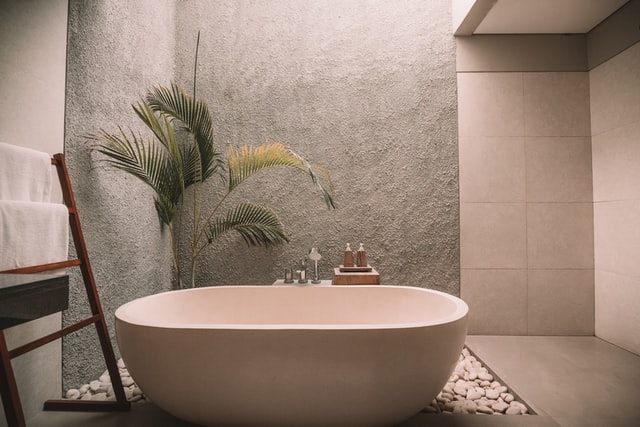Like Clay in an Artist’s Hand
Variations in texture and pattern were achieved here by unique arrangements of shaped and colour stone veneers. These table tops present a sampling of possibilities –mosaic stones arranged in acquires and diamonds, plus solid borders. Placed either indoors or outdoors, they should be coated with a penetrating sealer-to prevent stains and discoloration-and wiped regularly with a clean, soft cloth.
Walkways
Step on it. Whether individual pieces shaped by nature are sets on the ground to form a footpath or carefully cut units are arranged in planned pattern, stone is a natural choice when producing a surface in which to walk. It’s hardy unaffected by weather and resilient. Stone can be manipulated to create varying shapes and finishes, but all tonal differences are achieved in nature: high temperatures and varying pressures under the earth’s surface act in different minerals to create the stone colours, for unpatrolled variations.




